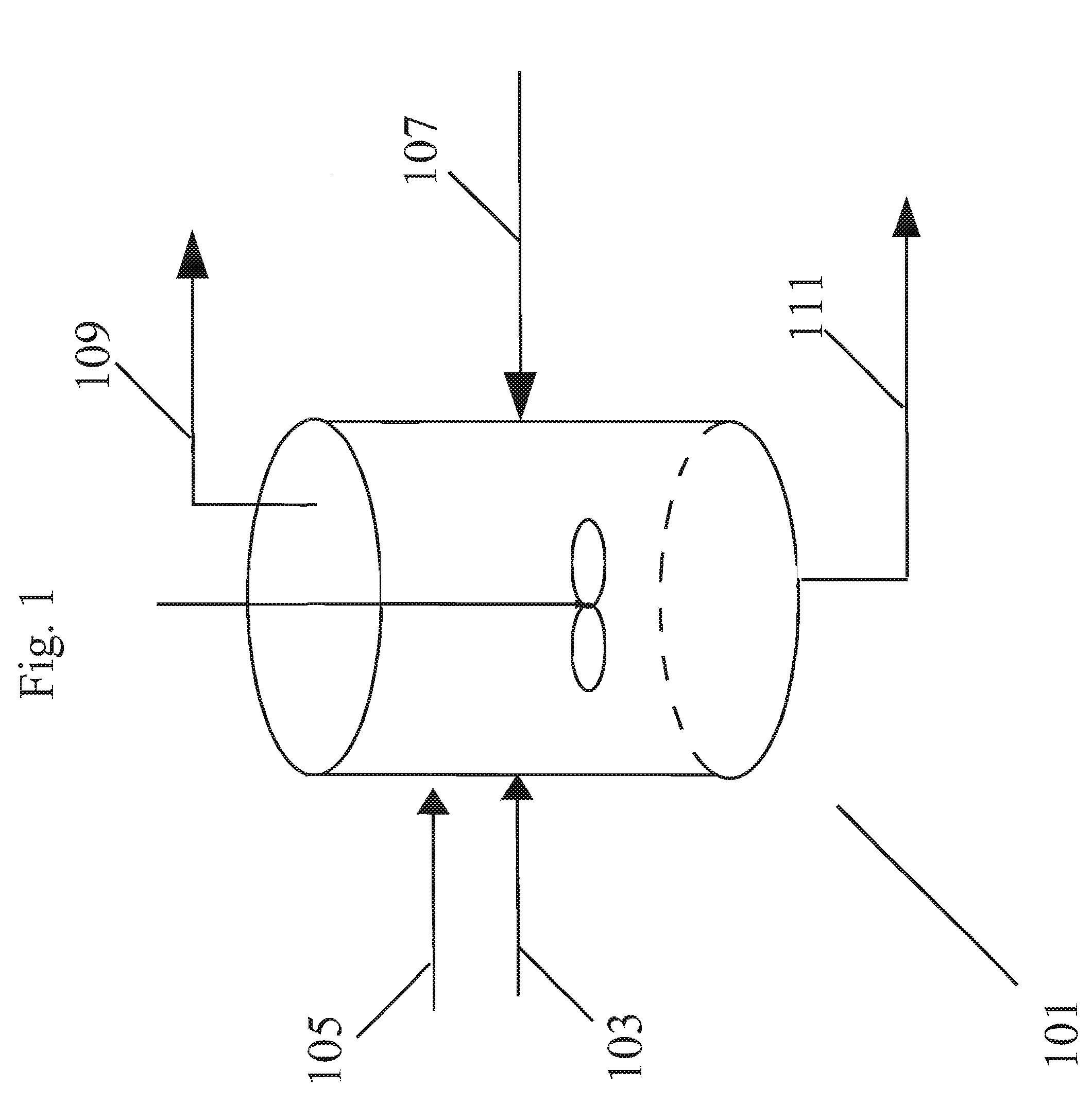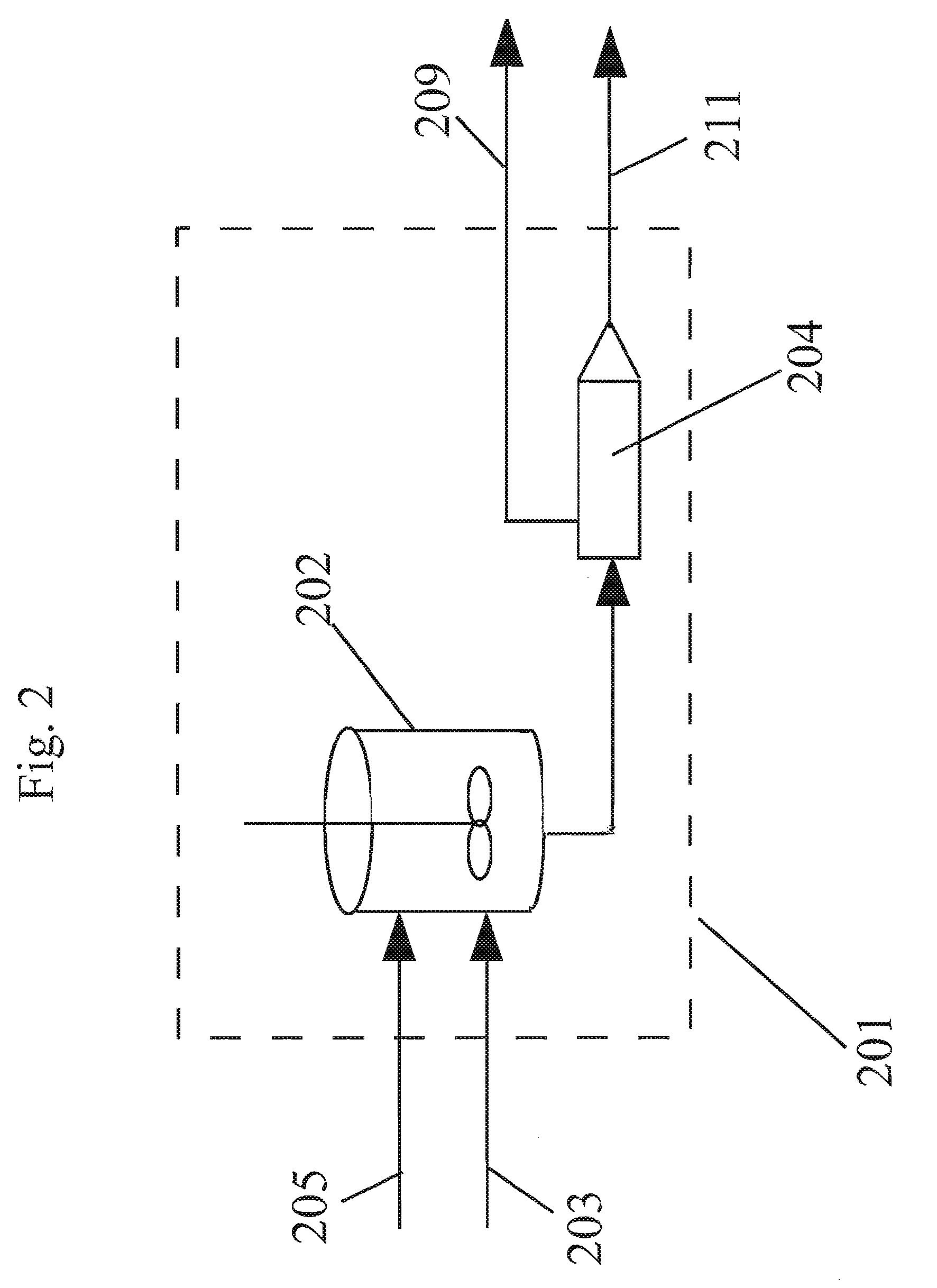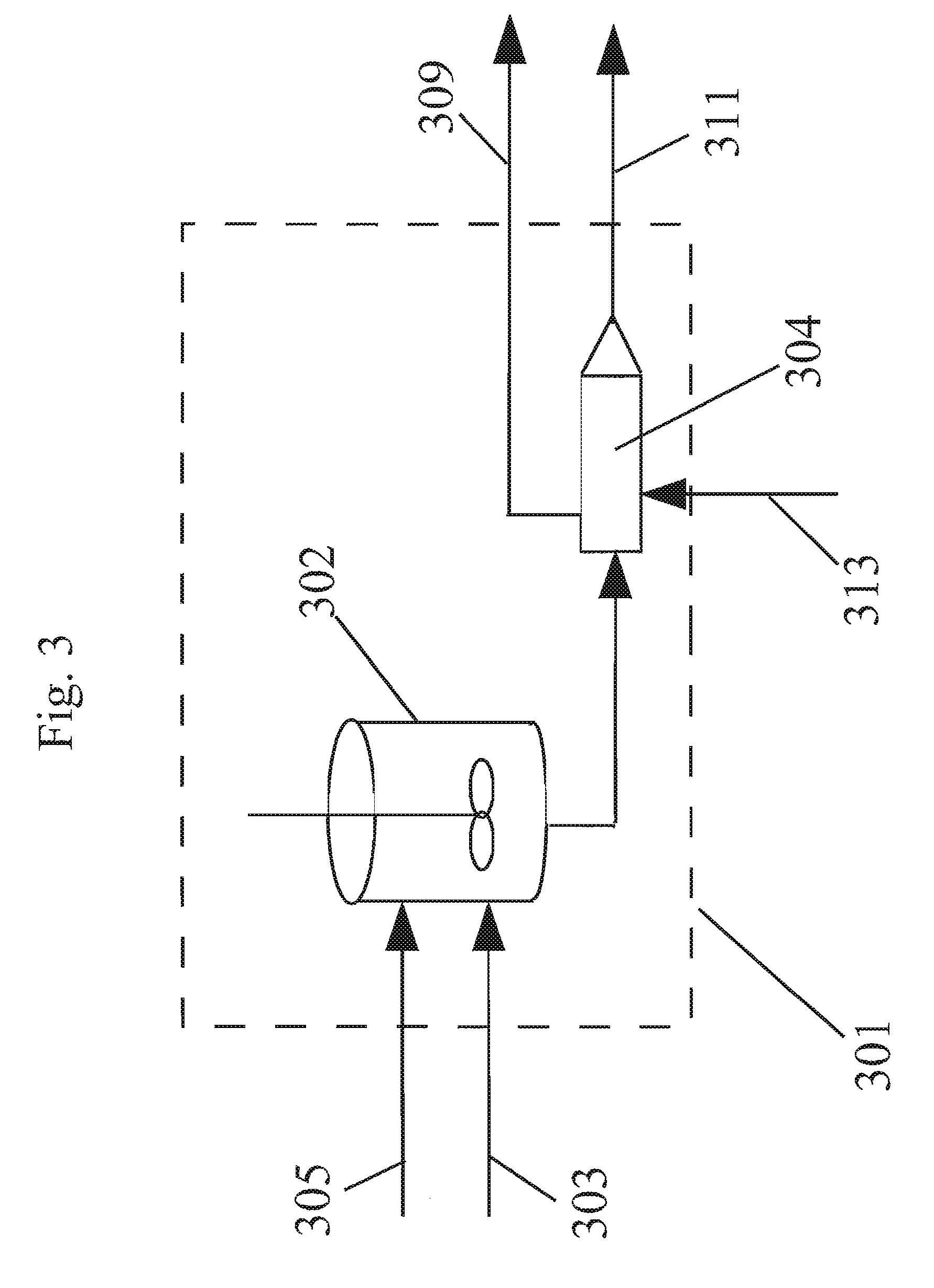Method of forming polycarbonate
a technology of polycarbonate and polycarbonate, which is applied in the field of polycarbonate production, can solve the problems of adversely altering the molar ratio of the reaction components (diaryl carbonate/dihydroxy), and achieve the effects of facilitating the transfer, and preventing the formation of a reaction reaction
- Summary
- Abstract
- Description
- Claims
- Application Information
AI Technical Summary
Benefits of technology
Problems solved by technology
Method used
Image
Examples
working example 1
Bismethylsalicylcarbonate (BMSC) in Methyl Salicylate (MS) Addition to the Reaction Components
[0117]A reaction mixture comprising BPA, methylhydroquinone, and hydroquinone were reacted in a melt polymerization reaction to form a terpolymer in Working Example 1. The formulated BMSC / total diol molar ratio was 1.0195. The oligomer was fed to the extruder at a rate of 13.5 kg / hr for 3 hours. Extrusion at the above conditions obtained a polymer with a PC Mw 28,479 g / mol. At this time a solution of 4% (w / w) BMSC in methyl salicylate (MS) was fed to the extruder feed line at a rate of 5 ml / min. At this flow rate a shift in BMSC / diol mol ratio of 0.002 caused a Mw drop of the polycarbonate of 1,985 g / mol down to 26,714 g / mol. As shown in FIG. 7, a corresponding systematic decrease and a step change in the torque as measured on the extruder was also observed as the BMSC was added. No operational issues were observed before and during the addition period. As shown below in Table 2, no signifi...
working example 2
BPA in MS Addition to the Reaction Components
[0119]A reaction mixture comprising BPA, methylhydroquinone, and hydroquinone were reacted in a melt polymerization reaction to form a terpolymer in Working Example 2. The formulated BMSC / diol mol ratio was 1.02. Oligomer was fed to the extruder at a rate of 13.5 kg / hr for 3 hours. Extrusion at standard conditions obtained a polymer with a PC Mw 28,244 g / mol. At this time a solution of 4% (w / w) BPA in MS was fed to the extruder feed line at a rate of 5 ml / min. At this flow rate a shift in BMSC / diol mol ratio of 0.002 caused a PC Mw increase of 3,574 g / mol up to 31,818 g / mol. As shown in FIG. 8, a corresponding systematic increase and step change in the torque as measured on the extruder was also observed as the BPA was added. No operational issues were observed before and during the addition period. As shown below in Table 3, no significant negative impact of the addition was observed on the polymer product properties such as color, resid...
working example 3
Non-Aqueous Catalyst Solution in MS / MeOH Addition to the Reaction Components
[0121]In this example a non-aqueous catalyst solution based on MS and methanol (MeOH) as co-solvent was used to polymerize on a reactive extruder an oligomer prepared by a batch oligomerization process. A reaction mixture comprising BPA, methylhydroquinone, and hydroquinone were reacted in a melt polymerization reaction to form a terpolymer in Working Example 3. The formulated BMSC / diol mol ratio was 1.0175. For 4 hours the oligomer was fed to the extruder at a rate of 11.5 kg / hr. A polymer was obtained with an average Mw 23,979 g / mol. During this time a catalyst solution of 2.5013×105 mol / (mol diol) TMAA and 2.099×106 mol / (mol diol) NaOH in MS / MeOH combined liquid carrier comprising an ester-substituted phenol and polar co-solvent was added to the oligomer reactor M at a flow rate of 0.2 ml / min. At the same time an additional catalyst solution of 5.981×106 mol / (mol diol) NaOH in MS / MeOH was added to the ext...
PUM
| Property | Measurement | Unit |
|---|---|---|
| boiling point | aaaaa | aaaaa |
| boiling point | aaaaa | aaaaa |
| boiling point | aaaaa | aaaaa |
Abstract
Description
Claims
Application Information
 Login to View More
Login to View More - R&D
- Intellectual Property
- Life Sciences
- Materials
- Tech Scout
- Unparalleled Data Quality
- Higher Quality Content
- 60% Fewer Hallucinations
Browse by: Latest US Patents, China's latest patents, Technical Efficacy Thesaurus, Application Domain, Technology Topic, Popular Technical Reports.
© 2025 PatSnap. All rights reserved.Legal|Privacy policy|Modern Slavery Act Transparency Statement|Sitemap|About US| Contact US: help@patsnap.com



